Butterfly handlebars are often thought to be the most comfortable for bicycle touring. Is this really the case though? Below, I compare the various types of bicycle touring handlebars available, and go over the pros and cons of each one.

Handlebars For Bicycle Touring
How well do butterfly handlebars stack up against other types of bicycle touring handlebars?
After having used all the major types of bicycle handlebars on bike tours around the world, I've had a good chance to compare one sort against the other.
My favourite bike touring handlebar setup (mentioned at the bottom of the post) is of course a personal choice.
In this blog post though, I go through the pros and cons of each handlebar type to aid in your own decision making process.
Let's start with butterfly bars.
What are Butterfly Handlebars?
Also known as trekking bars, butterfly handlebars are most commonly seen on European touring bikes.
They are also proving popular with people building their own expedition bicycles. Their unique design aids hand position comfort during long bicycle rides.
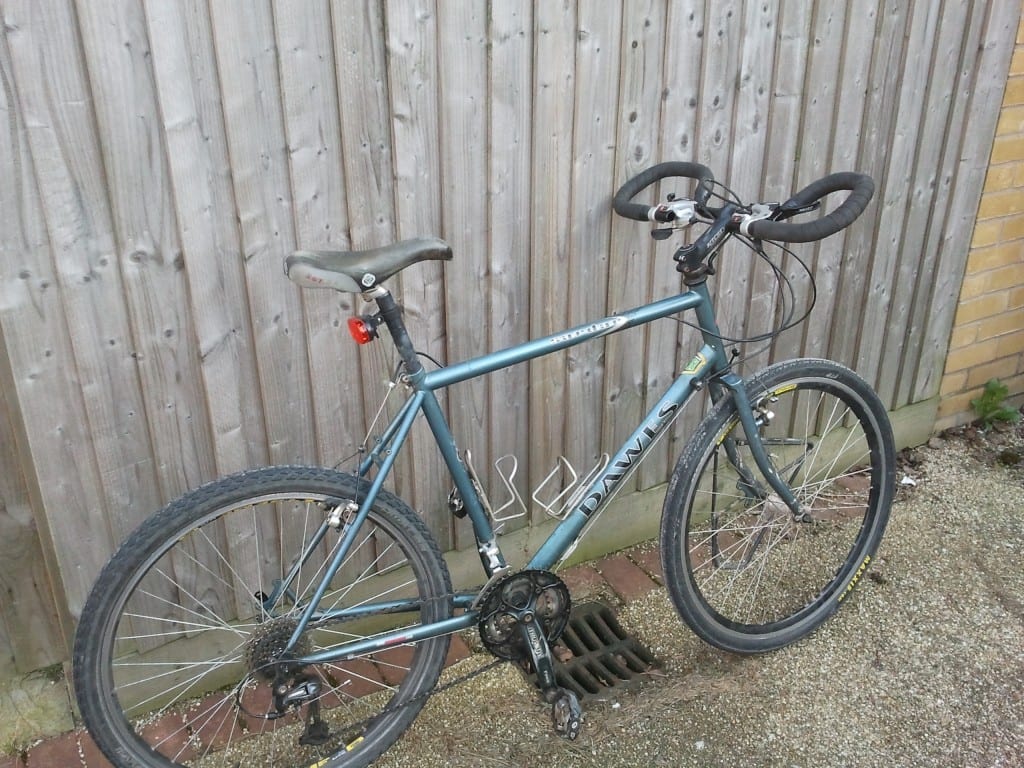
Butterfly Handlebars for Bicycle Touring
When I was first considering building my own expedition touring bike before purchasing a Thorn Nomad, I had included butterfly handlebars on my setup.
I used these for around a year or so, commuting 15 miles every day, and also doing weekend rides and weekend bike tours.
After this time, I eventually decided that trekking bars were not for me. Here's what I thought to using the trekking bike handlebars.
Pros of butterfly handlebars for bike touring
- Butterfly handlebars offer a wide variety of multiple hand positions. This is obviously appealing for any cyclist who is spending hours on end in the saddle day after day.
- They do look kind of cool.
Cons of Butterfly Handlebars for bike touring
- I have found that butterfly handlebars have a tendency to flex when a lot of strain is put on them. This is most notable when cycling tough uphill sections. Is this flexing a bad thing? I couldn't say for sure, but it can't be healthy for the bars in the long term, and I imagine that some energy is lost in this flexing.
- Again, lots of curved metal, which surely can't be a good thing and may break over time.
- Can be awkward trying to fit a handlebar bag onto the bike.
Drop Bars for Bicycle Touring
This type of bicycle handlebar is most commonly found on what might be classed as a classic touring bike. The ability to get low over them, means that they have their uses in bike touring, whether going downhill, pedalling into a headwind, or even drafting behind a cycling partner.
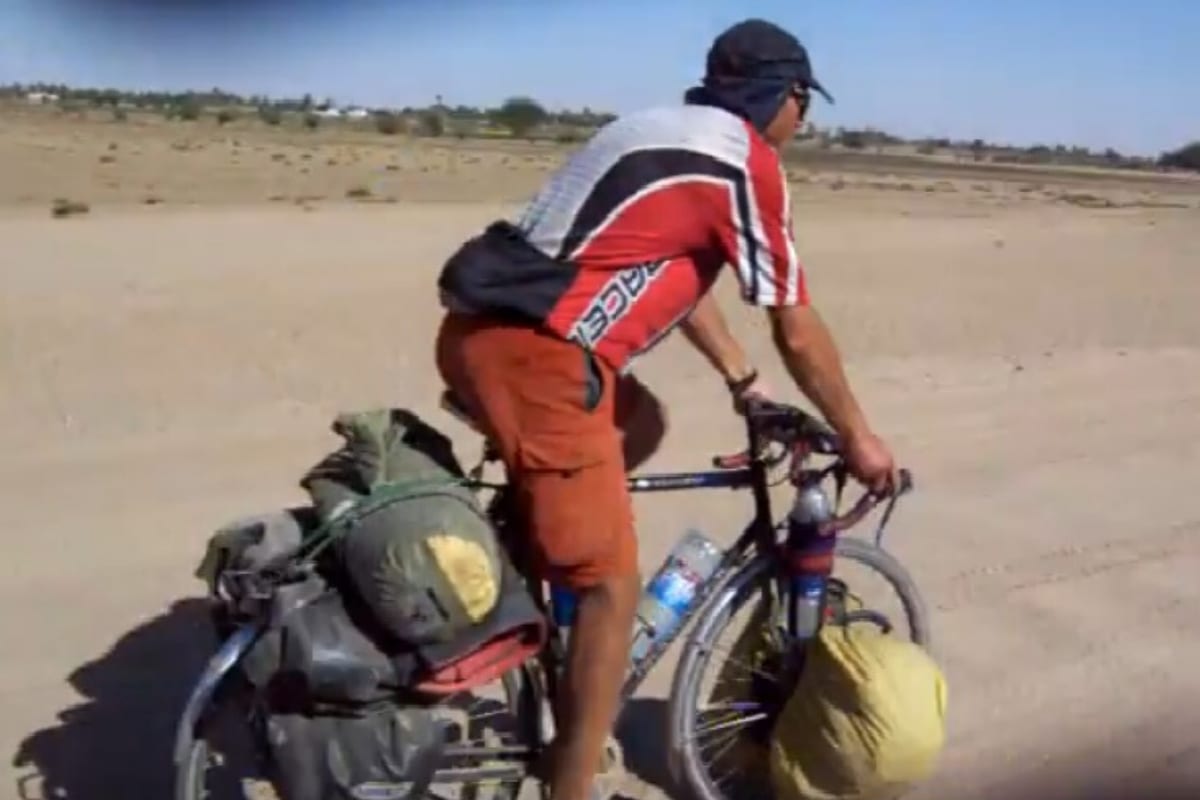
What are drop handlebars for?
Drop bars or road handlebars give a cyclist at least three different hand positions when riding on the hoods, the drops, or the bars. You can also get down low for a more aerodynamic riding position.
I have used drop bars when cycling from England to Cape Town, and also from Alaska to Argentina. During these long distance journeys, I cycled across a wide range of road conditions and I had no major issues apart from some gravel roads.
On gravel roads, wider bike handlebars might have helped more with balance and stability.
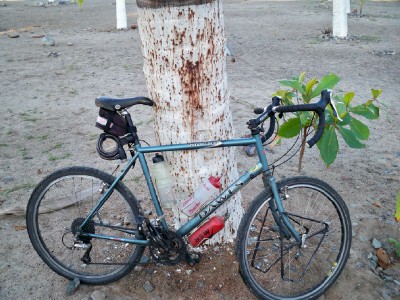
Pros for drop handlebars for bike touring
- Drop handlebars offer a variety of hand positions. This means that shoulder or neck ache can be alleviated by swapping the grip on them, whether just using the top, or using the actual drops themselves.
Cons for drop handlebars for bike touring
- Being relatively narrow, stability can be an issue when cycling off road dirt tracks using drop handlebars.
- Any curved piece of metal is never going to be as strong as a straight one. Over time, cheaper versions will show their true colours by bending or flexing. In the most extreme circumstances they might break totally.
Straight Handlebars for Bicycle Touring
Flat bars are normally found on mountain bikes, and many expedition bicycles feature them in their set up, with the addition of sturdy end bars which can aid in steep uphill ascents.
A flat handlebar or MTB bar is a natural choice for many bicycle tourers looking for a setup that is low key and low maintenance.
I decided to opt for this style of bikepacking handlebar when I cycled from Greece to England, as I find it suits my slightly upright riding style better.
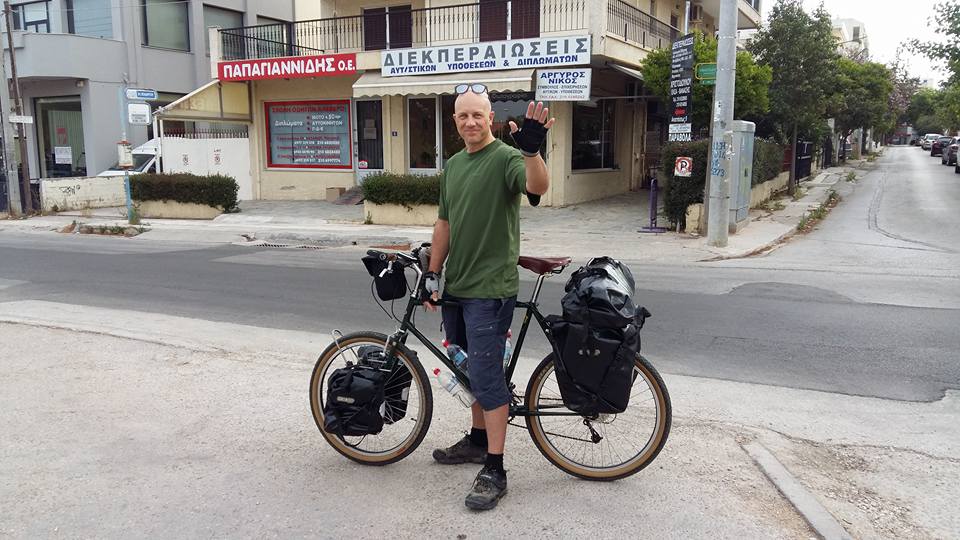
Pros of straight handlebars for bike touring
- This style of handlebar is perfect for cycling along rough roads, as the width provides great stability for the cyclist.
- A straight handlebar, as long as it is of good quality, is practically indestructible, which is always a massive bonus to the cycling tourer.
- It promotes a more upright riding position, which means that you can actually see some of the countryside that you are riding through!
Cons of straight handlebars for bike touring
- A straight handlebar does not offer much variety when it comes to hand positions. This can be a bit irritating when cycling hour after hour on those long roads.
- It might promote a more upright riding position, but this means that it will be a lot harder work cycling through a headwind.
What is the best type of bike touring handlebar?
After nearly 20 years of cycling around the world on different bike tours, I have found that the best bike touring handlebars for me are flat bars. I believe that overall flat bars offer the most comfort for me personally in both hand and riding position.
Note: I have actually spent more time on long distance bicycle tours using drop style handlebars than butterfly style or any other though! This wasn't through any sort of decision making process though. It just happened to be what handlebars were on the bikes I bought at the time!
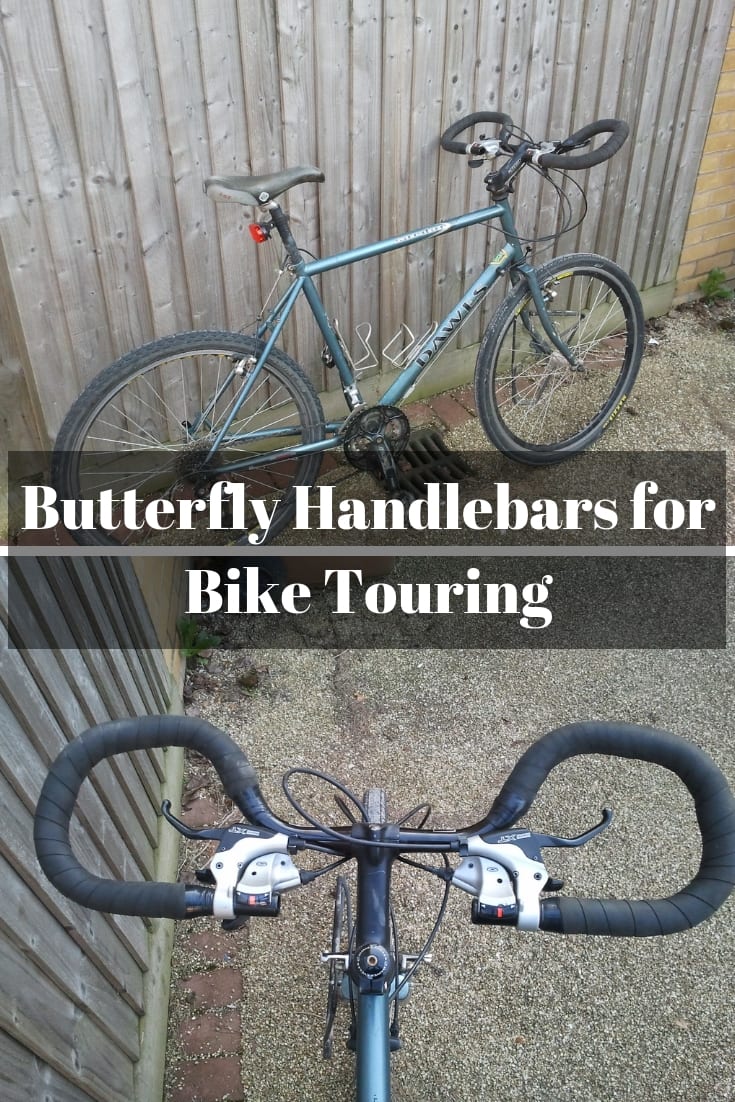
Butterfly Bars For Touring Bikes FAQ
Readers who wonder if a trekking bar / butterfly handlebar might be better on their next tour ask questions such as:
Are trekking handlebars good for bikepacking?
A butterfly handlebar can be a good addition to a bikepacking setup, especially for longer tours. It offers a rider more comfort thanks to its multiple hand positions, and lots of stability when riding in an upright position.
What are the best handlebars for bike touring?
A drop bar is probably the most common handlebar, followed by flat bars and then butterfly bars. Which one is best depends on the rider!
Why do touring bikes use butterfly handle bars?
They feel comfortable on long rides, thanks to there being more than one position you can place your hands. This takes strain off the shoulders, neck, and arms, which is particularly welcome on long tours!
What are butterfly handlebars for?
Designed with comfort and efficiency in mind, many cyclists find butterfly bars more comfortable compared with flat or drops.
Best Touring Handlebars
What do you think are the best touring bicycle handlebars? A butterfly handlebar setup offers a lot of advantages such as varied hand positions which could be most welcome on a long tour. Leave a comment below on what you consider to be the best touring bike handlebars and why!
If you are planning a bicycle tour, you might also find these other bicycle touring articles useful.
- Bikepacking Navigation – Maps, GPS and Local Knowledge
- Bike Multi-Tools – Bicycle Touring Gear or Not?
- Rohloff Hub – Why Choose One for Bicycle Touring
- Bicycle Touring Gear List
- Bikepacking shoes
- Best Handlebar Bags for Touring
- Ortlieb Pannier Review
 Article Author: Dave Briggs
Article Author: Dave Briggs
Dave has cycled around much of the world, including multi-year bike touring trips such as cycling from Alaska to Argentina, and England to South Africa. Check out his reviews and tips about bike touring.
Follow Dave on social media for travel, adventure and bicycle touring inspiration: